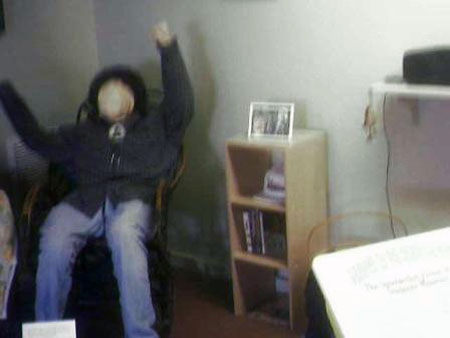
a phoetics: fragment 7
The PIE *wel- also means "to turn, roll," and phoetry as it may be tied to what is well makes apparent the tropological nature of our moment. "Trope" equals "turn." The root of things is chiastic, crossing and cancelling/completing the antiomorphic body. A complete trope (turn) winds back on itself, both circling and insolating: A complete trope may even eliminate.
But things are as (in motion) they appear, not what (in stasis) they appear. This may be read in one of Olson's application of Whitehead's Process and Reality, in which that mathematician and philosopher attempts to synthesize Plato's cosmology of Timaeus with modern science, with specific reference to Einstein's theory of relativity, underscored by a primary concern: "Our datum is the actual world, including ourselves"... The elucidation of immediate experience is the sole justification for any thought." Whitehead's redress of the Cartesian worldview"”as his secondary goal lay in partially exploding metaphysical conceit"”lies in the distinction between scalar, or "directionless magnitude," and vector, defined as "directed magnitude." With a particular eye to elucidating Olson's use of Whitehead, Robin Blaser writes: ""¦the one [scalar] is complete (say, the subjective poetry of the old humanism) while the other [vector] is coming into form by attention. The emphasis is upon prehensive [act of becoming] activity"... Olson accomplishes two things: he places human nature in the physical, like Whitehead's actual occasions, and he shifts the attention to the vector, 'the original vector forms,' 'the origins'"... He was to search for active form, rather than the referential kind which he reads as entrapment in the present cultural conditions."
Olson gives this "active form" further scope: "...the reason why the origins are not lost in the private emotion is that there is no element in the universe capable of pure privacy," and "to be "˜something' is to have the potentiality of acquiring real unity with other entities." This "potentiality" arises out of our innate attention: In fact, it requires one not to make but, importantly, to make out. According to a vector model, direction is innate, and so in a state of composition, more than lending such one rather gets out of the way of the universe.
The directional attribute of the vector model makes future outward, though coupled with the understanding that a future is located between. Growth directs this way, as does change, a manifestation, even if such appears to one as an internal event, as Dickinson writes: "internal difference/ where the meanings are." (Meaning, of course, is what is interesting: Meaning is the future.) It reminds one of Olson's stance: "What does not change / is the will to change." The will is well.
According to the irreversibility of time we cannot speak into the same speech twice; therefore no thing is complete (or closed), so, to make out sustainably take care of your well.
one: "I began working with voice recordings..."
two: "The week Robert Creeley died..."
three: "'Thing,' from the Anglo-Saxon..."
four: "While I mark the beginning of my interest..."
five: "After transcribing 'the wells at the mouth of itza...'"
six: "The distinction”and so mental distance..."
seven: "The PIE *wel- also means "to turn, roll...'"
eight: "Contrary to the fix in which Eliot lost and found..."
nine: "My relationship early on with ESB meta-intellect..."
ten: "It is absolutely important to remember..."